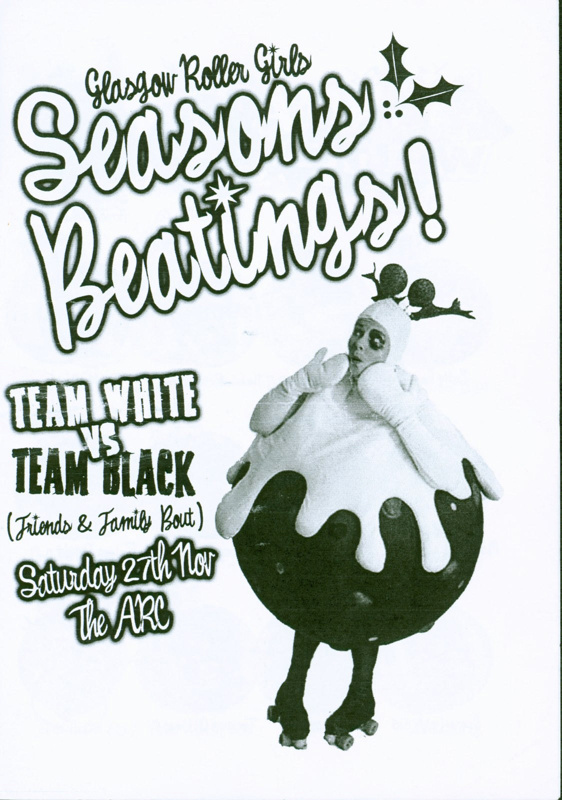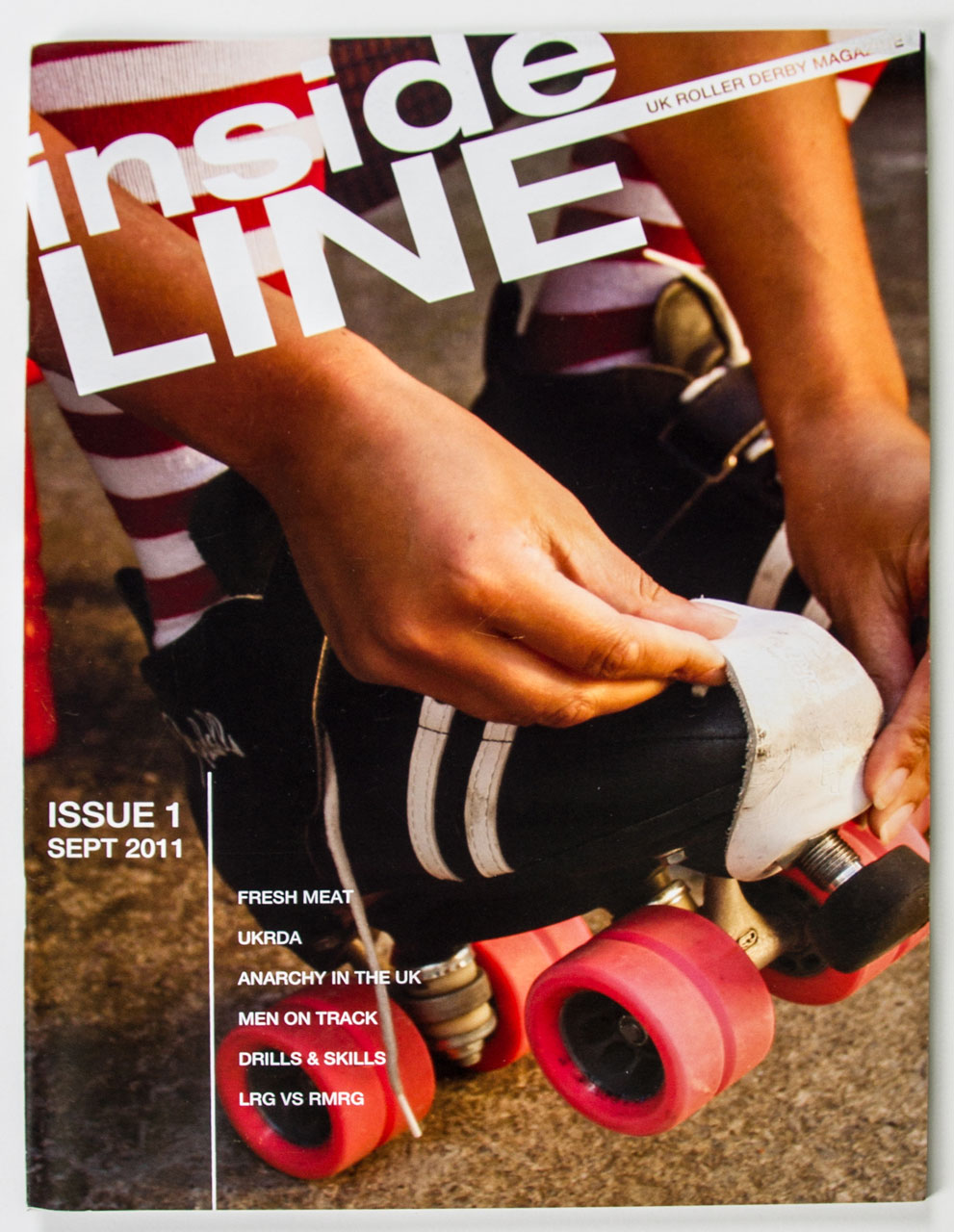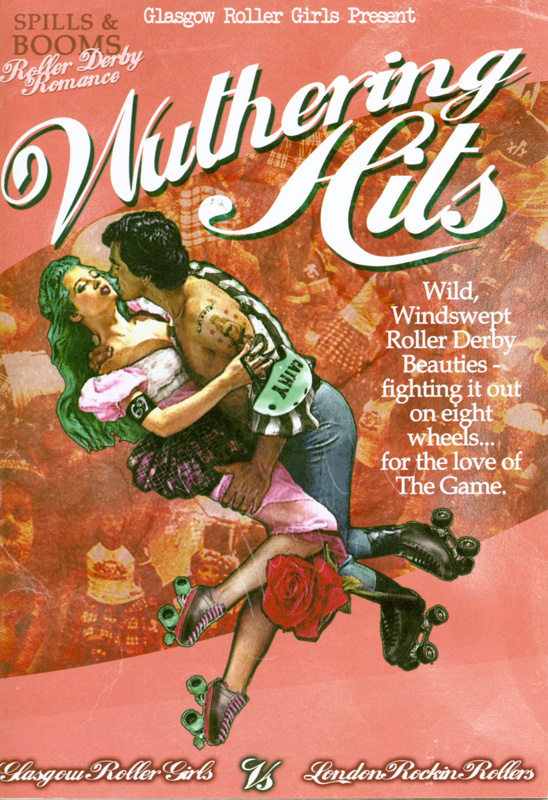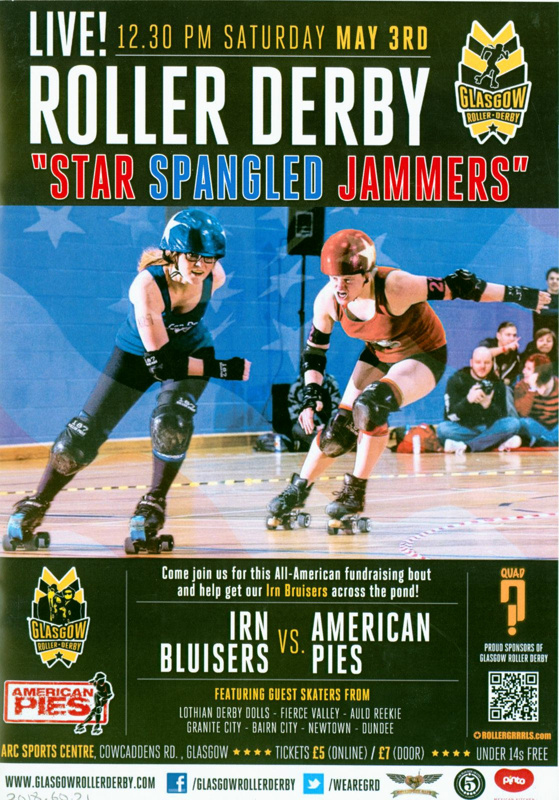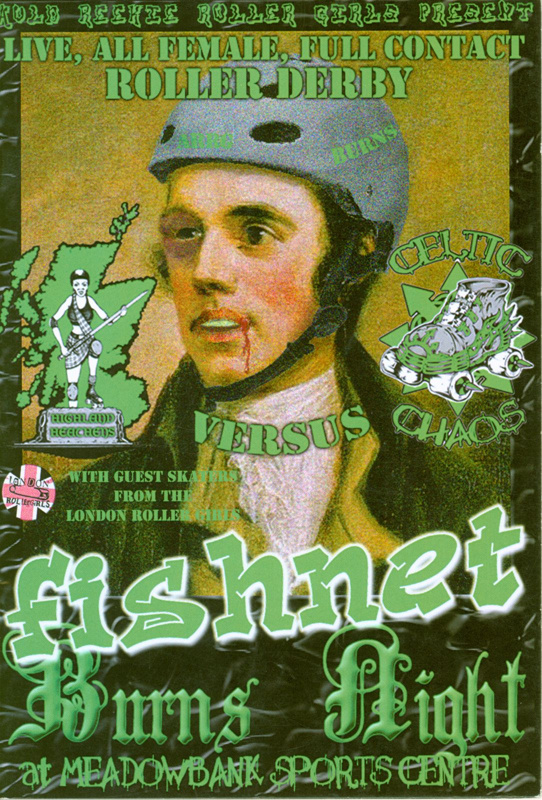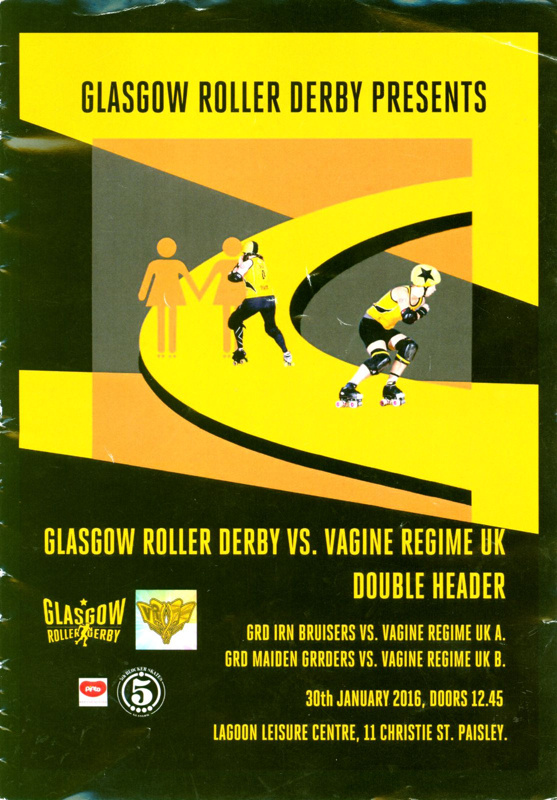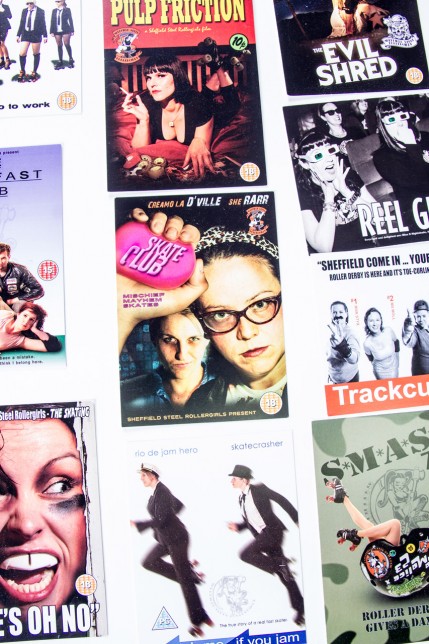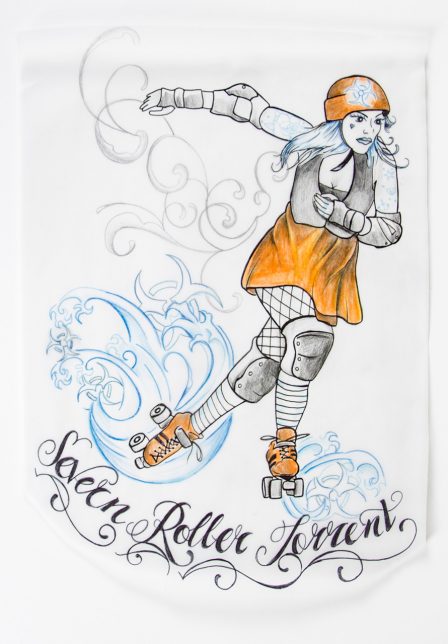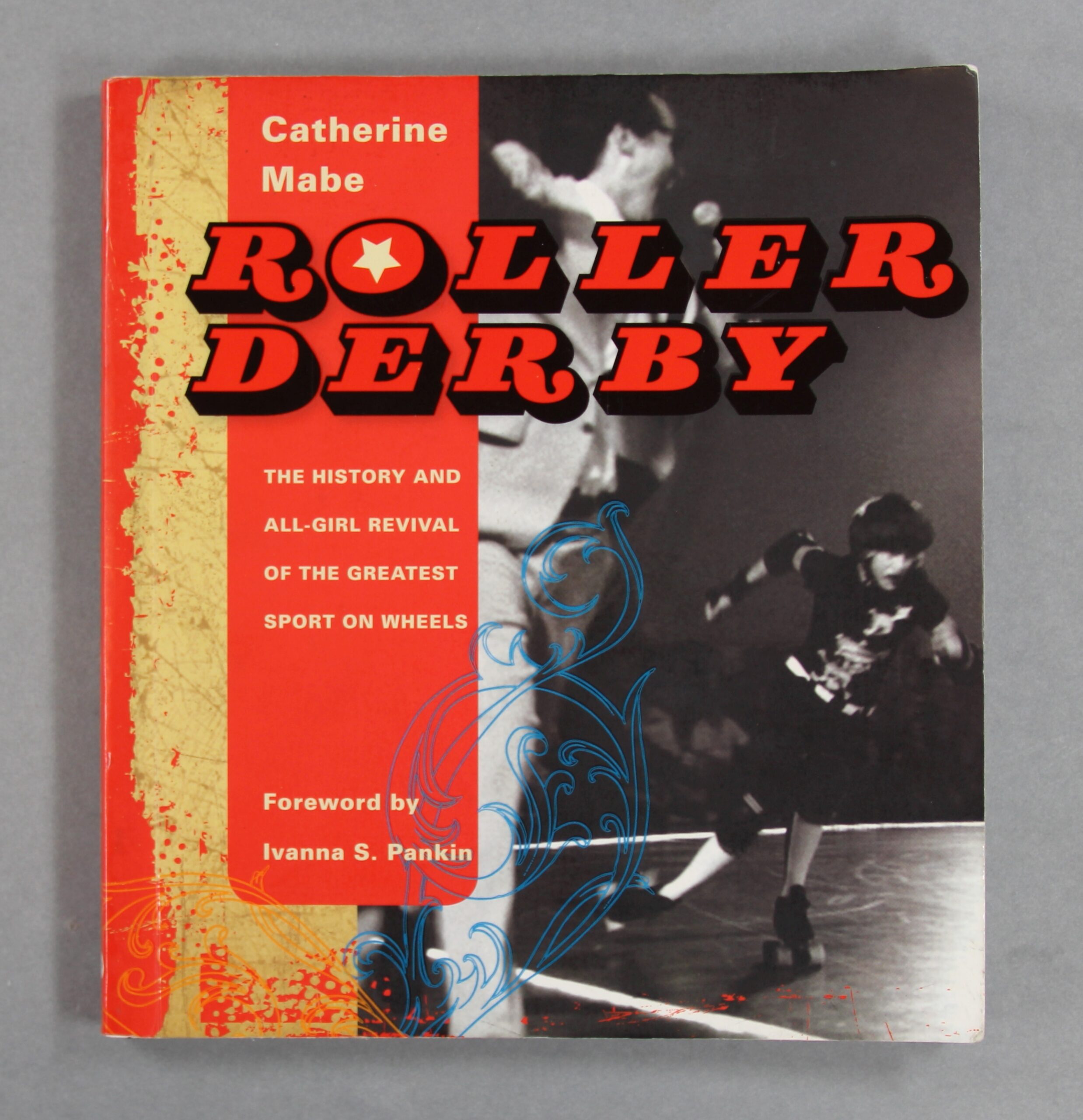Tis the season to be jolly and while 2020 hasn’t been the year that anyone wished for, we here at GWL hope you have a lovely festive season (whilst sticking within the rules of course!) and lang may your lum reek!
Category: NMRD Object of the Month
Established in 2012, the National Museum of Roller Derby (NMRD) is the UK’s first permanent collection of ephemera and memorabilia relating to the sport of Women’s Flat Track Roller Derby. In 2016, to celebrate our new permanent home in Glasgow Women’s Library’s new Bridgeton HQ, we bring you an ‘Object of the Month’ from our ever expanding collections.
We want your old team shirts, flyers, zines and other paraphernalia to illustrate the remarkable development of the sport in the UK. Keep an eye on the Facebook page for future announcements on how to donate items to the Museum.
Photos taken by Rebel Rebel #15 (aka Catheine Hemelryk) with thanks to Joe Brown & Luke Harby
NMRD Object of the Month: November
There are over 20 leagues in Scotland alone, and Scotland has partaken in three World Cups. In the 2015 British Championships, Glasgow Roller Derby won the top spot with Edinburgh’s Auld Reekie Roller Girls coming in second.
NMRD Object of the Month: October
The players really put their blood, sweat, and tears into roller derby – and not just on the track. The publication showcases the very creative and artistic illustrations, photography, graphic designs, and articles from members of the roller derby community.
NMRD Object of the Month: September
Roller Derby dismantles what it means to be ‘feminine’. It mixes adrenaline and ferocity with the provocative. Often, players names are derived from pop-culture references and the bouts are no different. This specific programme draws from the classic romantic genre Wuthering Heights by Emily Brontë.
NMRD Object of the Month: Roller Derby Bout Programme
Roller Derby was born from humble beginnings back in 1933 by Leo Seltzer. As he scribbled down rules on a table cloth in a restaurant in Chicago, he envisioned both men and women competing in a marathon type race – a race of stamina and speed. Initially roller derby was not a rough contact sport and was more similar to the dance marathons that were popping up at the time. Popularity for the game increased during 1930s depression era and it payed relatively well with good benefits. But for women, it was something more. It was a chance to to see women compete in equal measure to men in a sport.
NMRD Object of the Month: Roller Derby Bout Programme
In response to the increasing brutality of the sport, players wear helmets, knee pads, elbow pads, and wrist guards to help minimise injury. Players show off their track rash and bruises proudly as it has become a huge part of the sporting culture.
NMRD Object of the Month: Glasgow Roller Derby vs Vagine Regime Bout Programme
At its most base roots, roller derby has gender and LGBT+ policies that are the most progressive in any sport. It is a grassroots sport that welcomes all identities. The Vagine Regime is a community within this sport that has taken off and spread all across the world, from North America, to the U.K., and to Australia.
NMRD Object of the Month: Sheffield Steel Roller Girls Postcards
team names can often adopt puns hinting at local cultural references. Bouts and competitions also use cultural references in their names. This highlights the empowering nature of roller derby.
How many references and puns can you spot?
NMRD Object of the Month: Severn Roller Torrent Artwork
The combination of wearing provocative ’boutfits’ and playing a fierce and violent contact sport helps to challenge gender binary assumptions and heteronormative roles. It shows that women do not need to chose between being sexy and tough. They can be both.
However, in an effort to break the mould and transform from a fun league to a professional one, many teams today are ditching the ‘boutfits’ for more professional and athletic uniforms.
NMRD Object of the Month
In celebration of International Women’s Day on the 8th March 2020, this book details the history of the sport of Roller Derby and helps to illustrate the inclusion of women in this fierce contact sport since the 1930s. Female-led, the sport gained traction in the UK for its punk-rock aesthetic, pop-culture references, inclusivity, and fierce bouts.

